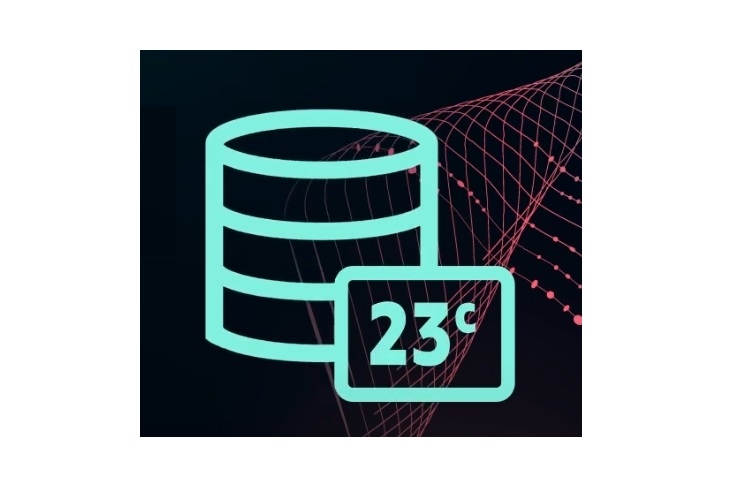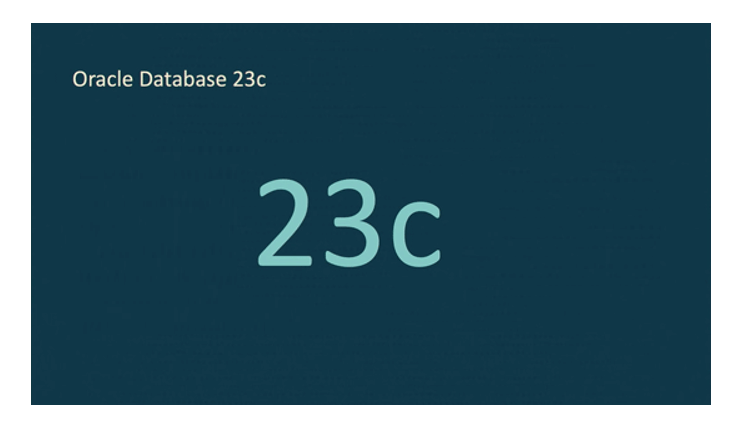Wednesday, May 31, 2023
Unlimited data-driven collaboration with Data Sharing of Oracle Autonomous Database
Monday, May 29, 2023
MAX_COLUMNS : Increase the Maximum Number of Columns for a Table (Wide Tables) in Oracle Database 23c
The Problem
The Solution : MAX_COLUMNS
Considerations
Friday, May 26, 2023
Full Text Indexing using Oracle Text
◉ Setup
◉ CONTEXT Indexes
◉ CTXCAT Indexes
◉ CTXRULE Indexes
◉ Index Maintenance
Wednesday, May 24, 2023
XML, JSON and Oracle Text Search Index Enhancements in Oracle Database 23c
◉ XML Search Indexes
◉ JSON Search Indexes
◉ Oracle Text Search Indexes
Tuesday, May 23, 2023
Benefits of 1Z0-931-22 Certification for Your Career Development
What Is 1Z0-931-22 Certification?
The 1Z0-931-22 certification is a prestigious credential offered by Oracle, and it specifically focuses on the Oracle Autonomous Database Cloud 2022 Professional. This certification validates an individual's expertise in managing and leveraging data effectively using the latest advancements in data management technology.
By obtaining the 1Z0-931-22 certification, professionals demonstrate their proficiency in Oracle Autonomous Database Cloud 2022, which incorporates cutting-edge technologies such as artificial intelligence, machine learning, and automation. This certification provides individuals with comprehensive knowledge and hands-on experience in utilizing these advanced tools to drive innovation and efficiency in data management processes.
The 1Z0-931-22 certification is highly regarded in the industry and is recognized by employers globally. It serves as a tangible validation of an individual's skills and knowledge in data management and analytics, establishing them as credible experts in the field. Professionals with this certification often enjoy enhanced career prospects, improved earning potential, and peer recognition.
Furthermore, the 1Z0-931-22 certification is not a one-time achievement but a commitment to continuous professional development. Oracle continually updates its certification programs to align with industry trends and emerging practices. Certified professionals have access to a vast network of resources and opportunities for ongoing growth and learning, provided they stay up to date with the latest developments in the field.
Unlocking Success: 1Z0-931-22 Certification Benefits
In the rapidly growing world of technology, staying ahead of the curve is crucial for professionals seeking success. As businesses strive to harness the power of data, the demand for skilled individuals who can manage and leverage data effectively has skyrocketed.
Acquiring the proper certifications in this highly competitive landscape can unlock new opportunities and propel your career forward. One such certification that stands out is the 1Z0-931-22 certification, which offers many advantages for ambitious professionals.
1. Enhanced Career Prospects with 1Z0-931-22 Certification
The 1Z0-931-22 certification can significantly enhance your data management and analytics career prospects. Employers across industries recognize the value of Oracle certifications and often prioritize candidates who hold them. This certification demonstrates your proficiency in Oracle Autonomous Database Cloud 2022 Professional, making you a sought-after asset in today's data-driven organizations. With this credential, you'll have a competitive edge over your peers and open doors to exciting job opportunities.
2. Expertise in Cutting-Edge Technology
The 1Z0-931-22 certification equips you with comprehensive knowledge and expertise in the latest advancements in data management technology. Oracle Autonomous Database Cloud 2022 combines artificial intelligence, machine learning, and automation to revolutionize data management processes. By becoming certified, you'll gain an in-depth understanding and hands-on experience in utilizing these cutting-edge tools effectively. This expertise enhances your professional profile and allows you to drive innovation and efficiency within your organization.
3. Validation of Skills and Knowledge
Earning the 1Z0-931-22 certification is a real validation of your data management and analytics skills and knowledge. It showcases your commitment to continuous learning and professional development, establishing you as a credible expert in your field. This validation can be particularly advantageous when competing for promotions or pursuing leadership positions within your organization. Employers value certified professionals who can bring proven expertise to the table, and this certification provides precisely that.
4. Increased Earning Potential with 1Z0-931-22 Certification
In addition to improving your career prospects, the 1Z0-931-22 certification can positively impact your earning potential. Certified professionals often command higher salaries compared to their non-certified counterparts. With the rapid growth of data-centric roles and the scarcity of qualified professionals, organizations are willing to invest in top talent. By acquiring this certification, and you position yourself as a highly skilled individual who can deliver exceptional results, translating into better compensation packages and financial rewards.
5. Continuous Professional Development
Oracle certifications, including the 1Z0-931-22, go beyond a one-time achievement and provide a platform for continuous professional development and learning. Oracle's commitment to updating its certification programs ensures that certified professionals stay abreast of the latest industry trends and developments. As technology evolves, staying up to date with emerging practices and acquiring new skills becomes essential. With this certification, you can access a vast network of professionals and resources that foster ongoing growth and knowledge enhancement.
6. Recognition and Prestige
Obtaining the 1Z0-931-22 certification brings recognition and prestige to your professional profile. Being associated with a globally recognized certification from Oracle elevates your standing within the industry and among your peers. The certification showcases your dedication to excellence and commitment to delivering high-quality results. As a certified professional, you gain a sense of pride in your accomplishments and enjoy increased credibility in your professional interactions.
In Conclusion
The 1Z0-931-22 certification offers a multitude of benefits for ambitious professionals seeking to unlock success in the realm of data management and analytics. From enhanced career prospects and cutting-edge expertise to validation of skills and increased earning potential, this certification opens doors to new opportunities and propels your professional growth. Additionally, its focus on continuous professional development ensures that you stay at the forefront of industry advancements.
Embrace the power of the 1Z0-931-22 certification and take your career to new heights!











